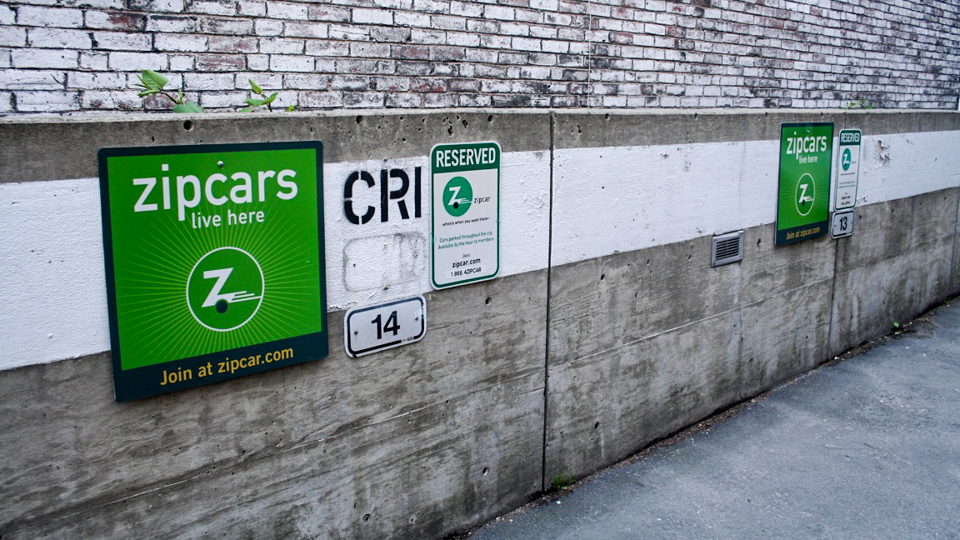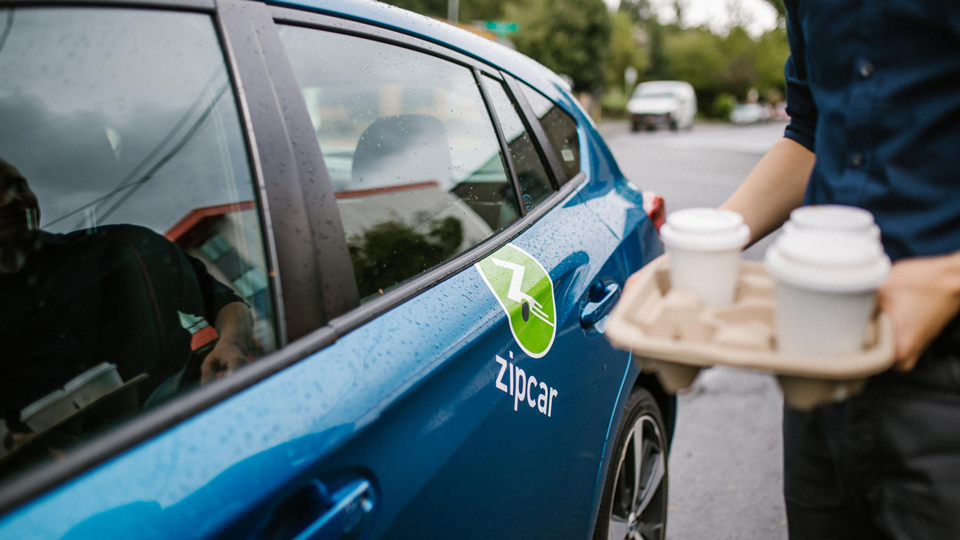
Before there was Uber and Lyft… there was Zipcar. This is so old school, that not only it dates before pre-pandemic times, it dates before Travis Kalanick. Freakin’ ancient.1
In the past few years, there have been multiple upstarts like car2go and Maven on the scene. In the end, though, almost all of them have been the sad casualty of the market, with the pandemic closing the final chapter on these companies. Nothing like Zipcar has survived in its place, and that's most likely because the company sold to Avis in 2013.
Given that most of ridesharing's most popular products, carpooling through either UberPool and Lyft Line, are no longer viable, safe options, private car rides have quite quickly become an unaffordable option as the companies seek to protect what's left. Seems like a good time to revisit the OG of carsharing.
Could it be possibly, that in the year 2020 and in the age of a global health crisis, Zipcar might be the most viable option for getting around town?
For specific uses, it does seem like the best option for getting around, and maybe even selectively for short road trips.
Signing up isn’t instantaneous
In a day and age where it’s pretty easy to get instant gratification through 9,000 apps and Amazon Prime (though that seems like it is happening less and less), Zipcar pretty much seems like a relic of the past.
Zipcar relies on a physical card to gain access to most cars, which comes in the mail, so even though approval can come swiftly, mostly folks are limited by the ability to get up and running by old-fashioned post. Getting set up does require some advance planning to get the card in your hands, even though reservations can be made at any point in time. Make sure to give it a week.
In our experience, we signed up for a Zipcar membership on July 7 (and were more or less approved with a day or so). The official Zipcar email came on July 14, saying the card was in the mail. Two days later, we received it. In total, it took about nine calendar days to receive the card.
Breaking down costs, including gas and insurance
The Zipcar annual and monthly fees vary across state and country, so for the sake of efficacy, we'll tackle costs in New York City.
In New York, the cost for a monthly membership is $7 per month, and the cost for an annual membership is $70 per year. None of this includes a one-time $25 application fee.
Basically, the first-month upfront costs are $32 for a monthly membership, and $95 for an annual membership. Including the application fee, it still takes about 10 months on the monthly plan to break even with the cost of the annual plan. In short: If you're choosing to use Zipcar for at least 10 months, the annual plan is the best bet.
In New York City, IDNYC holders get a free annual membership (though the $25 application fee is not excluded from this), making this a great deal. This is the plan we qualified for.
There is a relatively unknown 30-day money back guarantee for new members, where Zipcar will refund the membership fee. (The application fee isn't refunded. so it is wise to consider the $25 a sunk cost, regardless.)

There are lots where Zipcars live. (Christopher Schmidt / Flickr)
Zipcar’s main point of differentiation against traditional rental cars is that it includes gas and [secondary] insurance, though this can be slightly deceiving at first glance. For traditional car rentals, we always assume an extra $30-50 on top of the cost, though this can be wildly less or more depending on the cost of gas and how far the car is driven.
In terms of insurance, most travel credit cards offer primary insurance, so this can be a negligible cost. It is definitely worth pointing out Zipcar only offers secondary protection, meaning the driver is still liable out-of-pocket for damage costs. The company does offer additional protection: Limited coverage starts at an additional $5 per month, or $50 per year; full coverage starts at $9 per month, or $79 per year. There is no point in getting limited coverage, in our opinion.
However, it is still possible to utilize a credit card's primary rental car insurance provided the Zipcar charge is made on the card, and the card issuer is willing to cover it. It is highly advisable to check with the credit card in advance.
Mostly, Zipcar is geared toward short-distance rentals since it is limited to 180 miles daily, and most car rentals have an unlimited amount of miles.2 For an idea of how far this will actually take you, San Francisco to Los Angeles is some 380 miles, so a Zipcar would not suffice. Ultimately, the best way to think about it is that Zipcar ultimately offers 2 to 3 hours of solid highway driving per day.
Booking and modifying reservations is pretty seamless
Booking a Zipcar is pretty much what you'd expect. Quite frankly, we didn't want to bother with Uber or Lyft since it might require more than one trip. A quick search confirmed our suspicion: for a one-way Uber to the same destination, the cost estimate was $14.43 without tip.
By comparison, the hour-long rental ran $16.32 total including tax;. For two 15-minute trips, it took us from 9:54am to 10:38am in the car to complete. (It is always best to estimate things will take 25-50% longer on the road then they actually will. That's how I've stayed on time for my whole entire life.)
Zipcar does have a relatively forgiving refund, change and cancellation policy for those that might need some flexibility in case plans change.
Here’s a quick rundown:
| Rental Duration | Cancellation Period |
| less than 8 hours | 3 hours in advance |
| more than 8 hours | 24 hours (or one full day) in advance |
It’s pretty easy to change a reservation on the app, though different time slots have different prices. The final price will be adjusted to reflect this. Basically, pricing is determined by how demand, and is subject to peak timing.
In fact, our reservation ended up being changed twice, mostly because it seems we have no idea how to look at multiple Google Calendars at once. It was a pretty easy process to find another slot on another day, without making another charge on the credit card. Do take note: Once a reservation is made, the card is instantly charged.
Unlocking the Zipcar with the card thing
I mean, talk about rolling out of bed to avoid NYC traffic in the morning.
It wasn't until halfway that we were to the parking garage that we remembered to call the attendant an hour beforehand as instructed. So 22 minutes before pickup, we phoned to let them know we were on the way. No problem.
(The attendant asked us for the name of the car we were picking up; each Zipcar has its own name. In this case, we let him know that Bahama was the name of our 2015 Honda Civic.)
Getting to the car is when things got weird, though honestly, everything in life has a small learning curve the first time.
Despite some initial hiccups, and after some YouTubing how to unlock the car (but not before causing the car alarm to go off very unpleasantly for five to ten minutes in the parking garage), the car was finally ready to go.
Here is the actual video you need to see, and not a 17 year-old Instagrammer explaining the thing:
This was after some initial attempts to unlock the car with the app; honestly, we defaulted to the old-fashioned way when things became apparent, but for the life of us, couldn't figure out the actual thing to scan.
(It wasn't especially obvious on our car. The common consensus seems to be that the card reader is in the upper-right hand corner, so if you see a rectangular box thing in that location, try that first.)
It was also nice to see a box of Lysol wipes had been left in the car, though we chose to keep our mask on while driving. Talk about a nice pandemic touch, though do consider bringing supplies from home just in case.
Upon returning the vehicle, the parking attendant showed us how to lock the car: swipe the card, listen for the beep, and then check the door handle to see if the car is locked. Then he sent me, a princess, on her way back home.3
Initial impressions were pretty decent, actually
Besides the pure glee of getting to operate a motor vehicle for the first time this year, Zipcar was perfect for the task, which was a car to run some errands around town for an hour or so.
It does take more mental load than simply calling an Uber or Lyft (because, again, you are required to drive), but for quick jaunts that may require hauling around multiple, cumbersome things, Zipcar may be the best option.
I think where Zipcar really stood out to us was the numerous options around the immediate neighborhood, especially in a town like New York. It didn't require us to go down to Columbus Circle to pick up a Silvercar, nor to go to a rental location that tended to be a clustered around tourist hot spots inside the city. (NO ONE enjoys driving around Times Square.)
It also didn't require us to fill up gas, so the only thing to focus on was to accomplish the task at hand (avoiding the insane heat while picking up a suitcase).
Really, the sweet spot for Zipcar seems to be short, hour-long trips or going across town to somewhere difficult, like the beach, for a couple hours. For instance, a four-hour trek to IKEA seem like it'd be worth it.
For large distances, such as UES to the Rockaways, Zipcar would also be a great option, since an Uber there would cost $100.64 one-way (at the time of this writing). By comparison, it'd be possible to find a daily Zipcar rental for around the same price for almost an entire 24-hour period.
Uber and Lyft is not very cost-effective at the end of the day, and a daily car rental is still more cost-efficient. It's only really great for one-offs.

Remember to return the keys. (Jeff Easter / Flickr)
Oh, and please make sure the key is in the car, and not in your bag, when you return it lest you have to walk back to the parking garage after you get home. Just saying.



